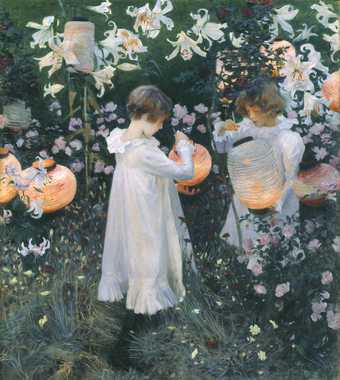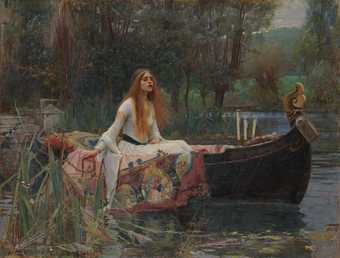
John William Waterhouse, The Lady of Shalott 1888. Tate.
Art for the Crowd 1815–1905
17 rooms in Historic and Early Modern British Art
Prosperity in Victorian Britain helps art become spectacularly popular. Dramatic images from life and literature attract blockbuster audiences
Britain’s wealth swells in the 19th century, fuelled by imperial expansion and industrial development. While most people remain poor, many have more money and leisure time. Millions enjoy art and culture, whether reading cliff-hanger novels by writers like Charles Dickens or visiting vast imperial displays like the Great Exhibition of 1851.
Thousands queue to view popular artworks on tour throughout Britain. Better printing allows more people to see or own reproductions. Some of the paintings in this room become world famous. Acts of Parliament and wealthy donors – typically industrialists – help public galleries open, with free entry, in cities such as Birmingham, Manchester, Glasgow and London. One of these, the National Gallery of British Art, funded by the sugar merchant Henry Tate, becomes known as the Tate Gallery.
To grab the attention of these crowds, artists choose literary and modern-life subjects that reflect ideas dominating their time. They often overlook, caricature or romanticise the experiences of many people. These include women, people of colour, workers or those living in poverty. However, traces of these lives can be seen in some of the paintings here.
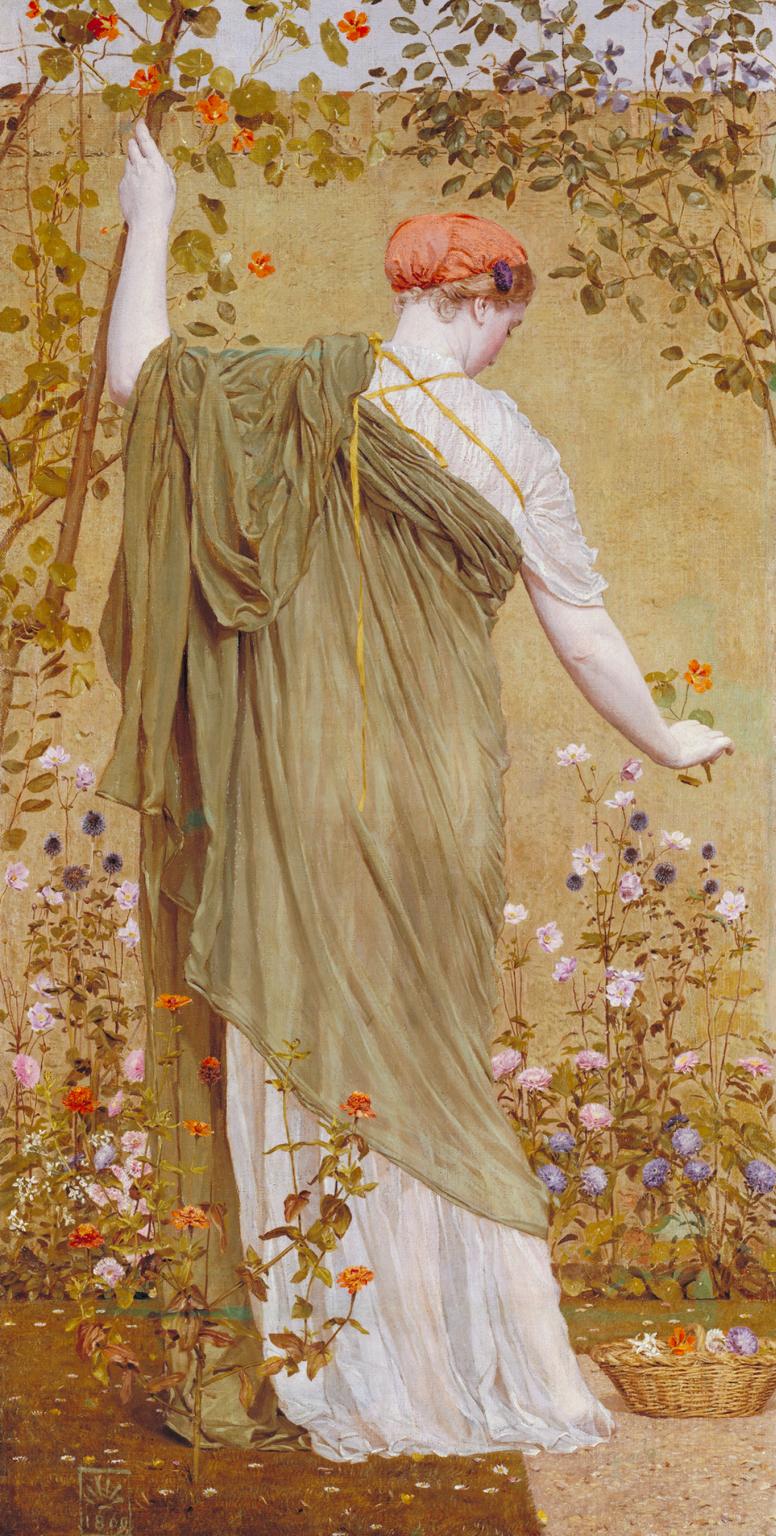
Albert Moore, A Garden 1869
Moore, like many of his contemporaries, was influenced by Japanese art. He produced decorative and subtly coloured pictures. Here, the woman’s costume allows him to concentrate on the colour, texture and movement of draped fabric. Art critic Sidney Colvin said Moore’s subjects were ‘merely a mechanism for getting beautiful people into beautiful situations’. The flower-like symbol at the bottom of the picture was used by Moore as a signature.
Gallery label, August 2018
1/30
artworks in Art for the Crowd
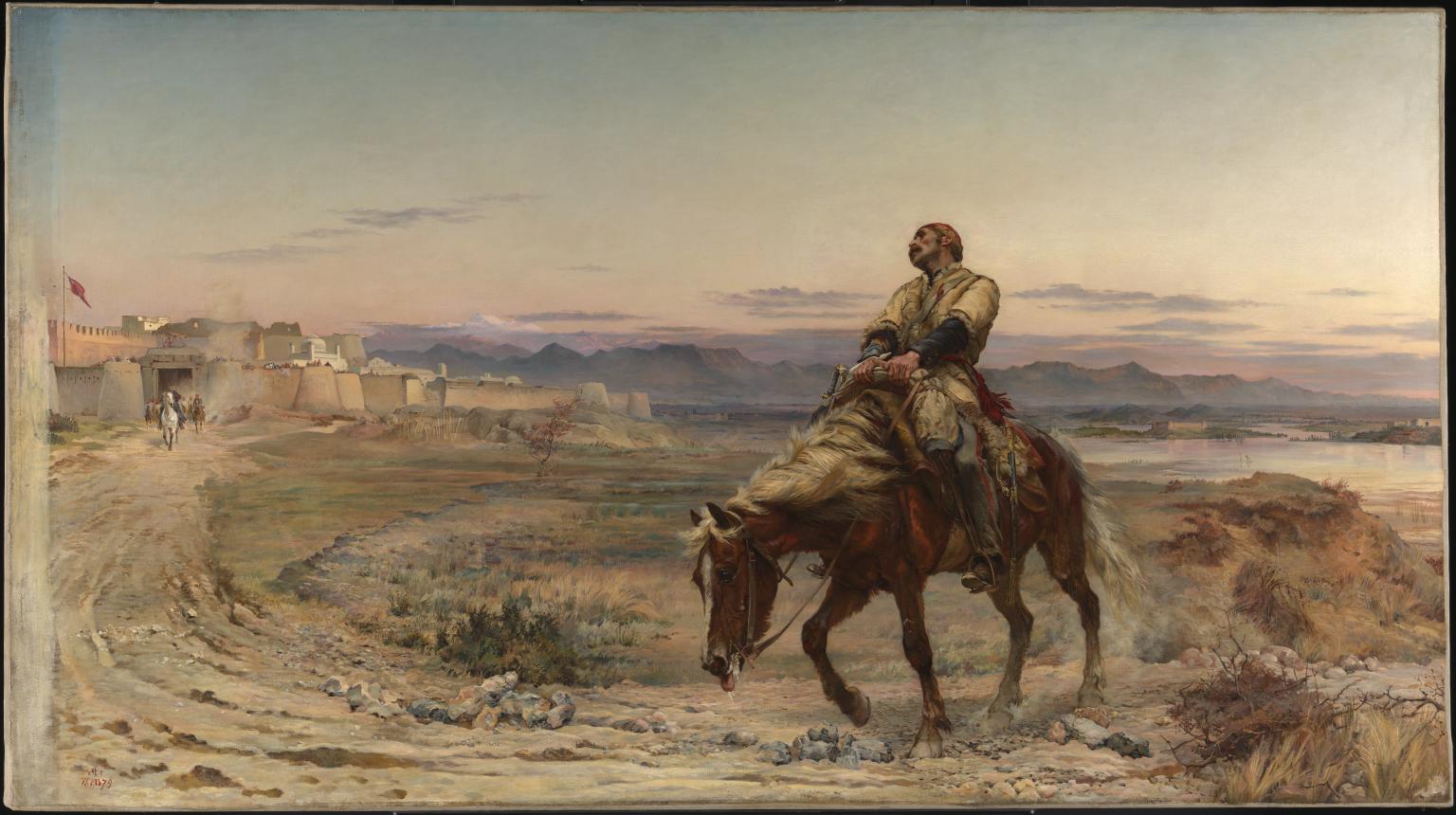
Elizabeth Butler (Lady Butler), The Remnants of an Army 1879
Elizabeth Butler represents the defeat of the British in the First Afghan War (1839–1842), when they failed to overthrow the Afghan leader Dōst Moammad Khān. Doctor William Brydon, believed to be the sole survivor of the British forces, reaches the British garrison at Jalalabad, ‘faint and reeling on his jaded horse’ against a dying light’. Butler was the leading battle painter in Europe, famous for depicting soldiers fighting at the edge of Empire, rather than the military elite. Butler’s family benefitted from Empire, but her circle was anti-imperial. This painting was made during the Second Afghan War, and offers a critique of that war.
Gallery label, May 2023
2/30
artworks in Art for the Crowd
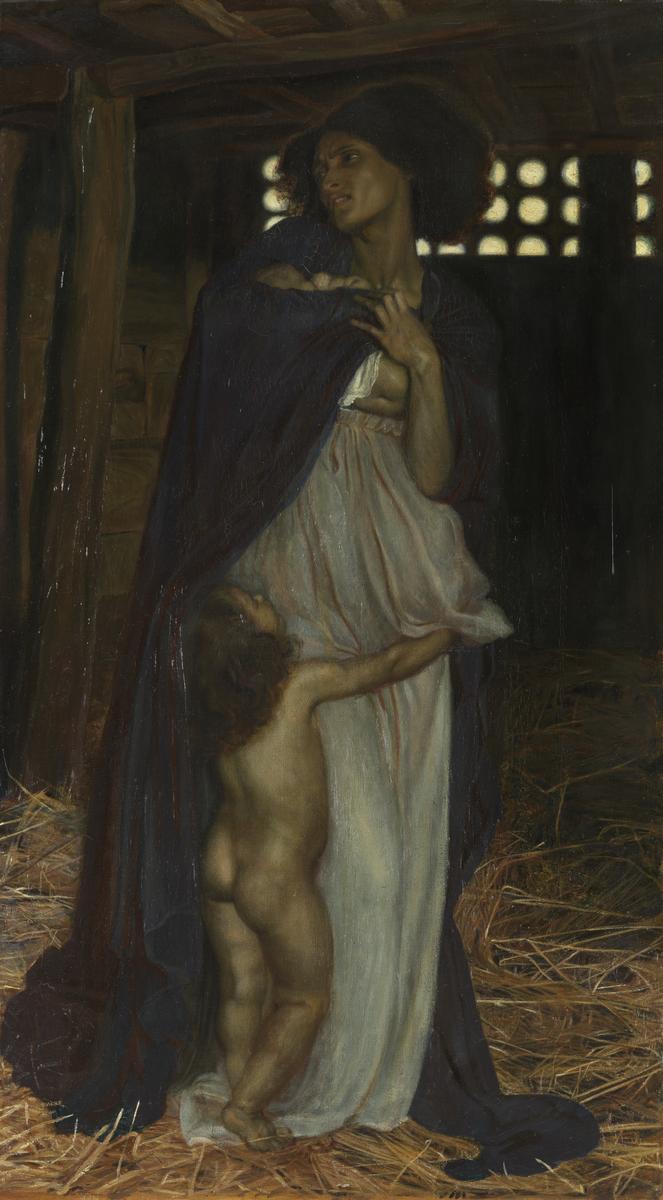
Sir William Blake Richmond, The Slave c.1865
This painting reflects a renewed interest in stories of slavery in Britain at the time of the Civil War between the American North and South. Many British artists were sympathetic to the cause of the North which sought to end slavery across the country. William Blake Richmond depicts the model Fanny Eaton and two of her children. Eaton was born in Jamaica, where her mother Matilda Foster, a woman of African descent, was born into slavery. Eaton moved to London with her mother when she was a child. She was a very successful model in London. She often appeared in roles which conveyed strong emotions and deep thought.
Gallery label, May 2023
3/30
artworks in Art for the Crowd
Thomas Faed, The Last of the Clan 1865
4/30
artworks in Art for the Crowd
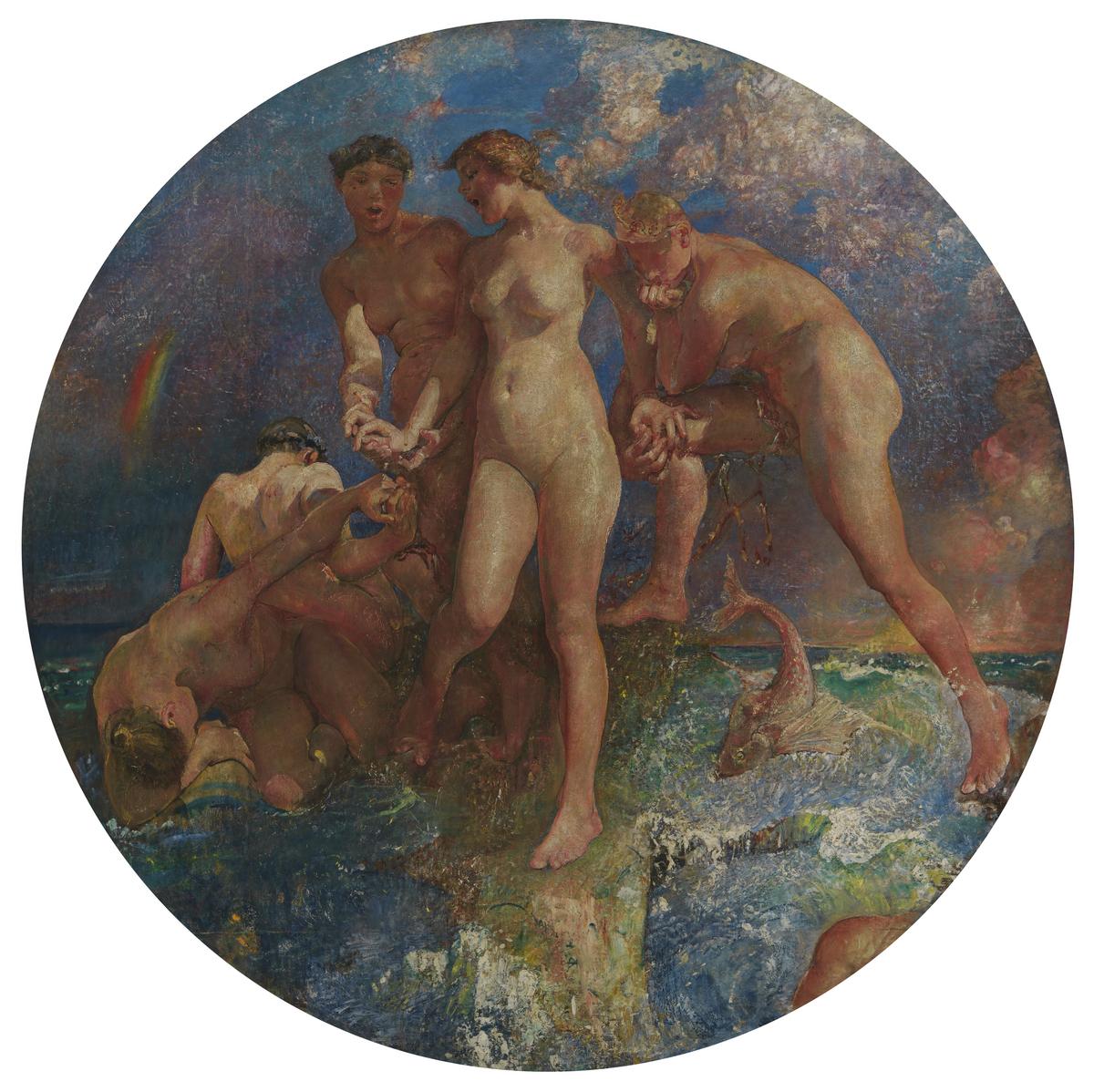
Annie Louisa Swynnerton, Oreads exhibited 1907
This work probably illustrates a scene in the ancient Greek poem ‘Dionysiaca’. Zeus, god of the sky, has flooded the earth. The oreads (mountain spirits) are forced to seek safety on higher ground. A rainbow suggests the storm is ending, although it is unclear if the figure on the lower right will survive. In 1922 Annie Swynnerton became the first woman to be elected to the Royal Academy of Arts in over 150 years. Swynnerton was also involved with the fight for women’s rights. Some of her sitters and supporters were leading figures in the women’s suffrage movement.
Gallery label, October 2020
5/30
artworks in Art for the Crowd
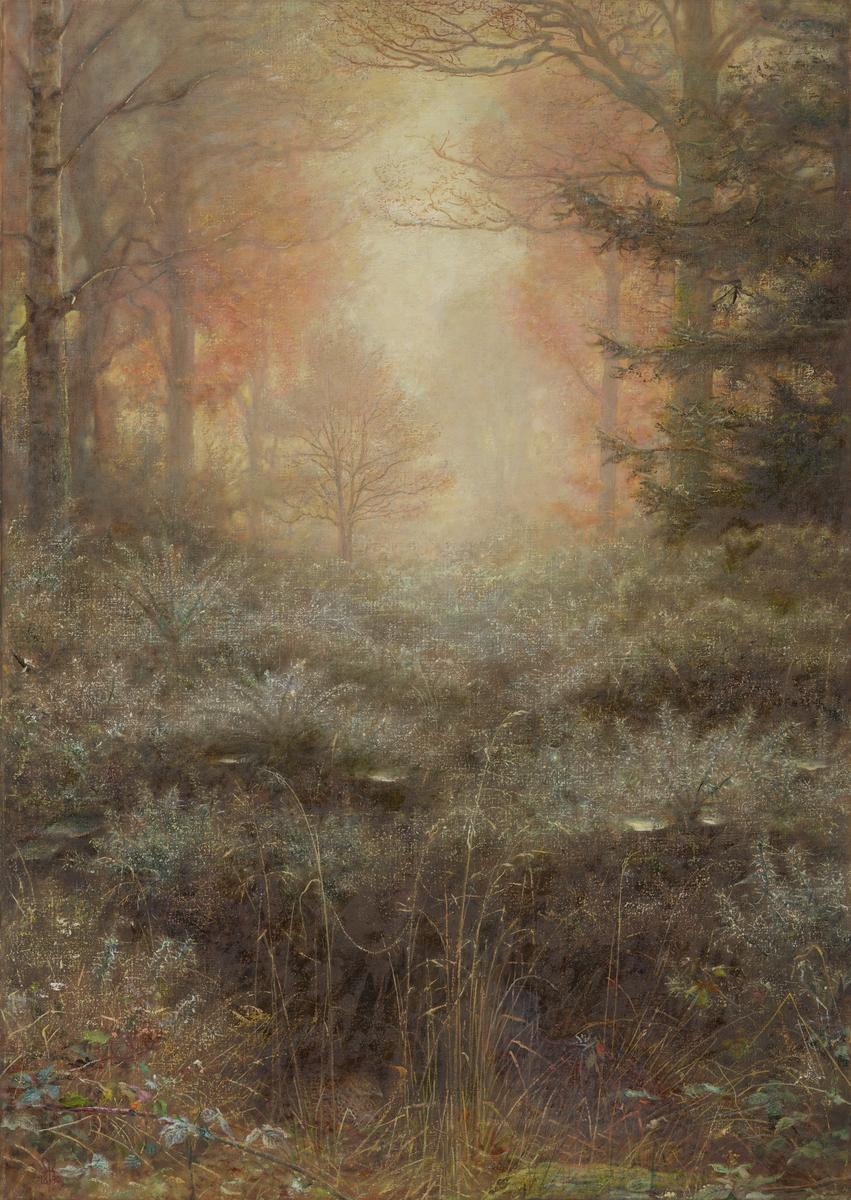
Sir John Everett Millais, Bt, Dew-Drenched Furze 1889–90
Dew-Drenched Furze was painted on site in Perthshire in a wood near Birnam Hill. The Millais family had rented a holiday home there from 1881. Millais intended to capture the morning sun streaming through a clearing, illuminated by droplets of dew. This was, according to his son, a subject Millais had never painted before, and one that as he begun he feared ‘might be unpaintable.’ He claimed his inspiration for the painting was ‘the potent voice of the wood spirits'.
Gallery label, August 2018
6/30
artworks in Art for the Crowd
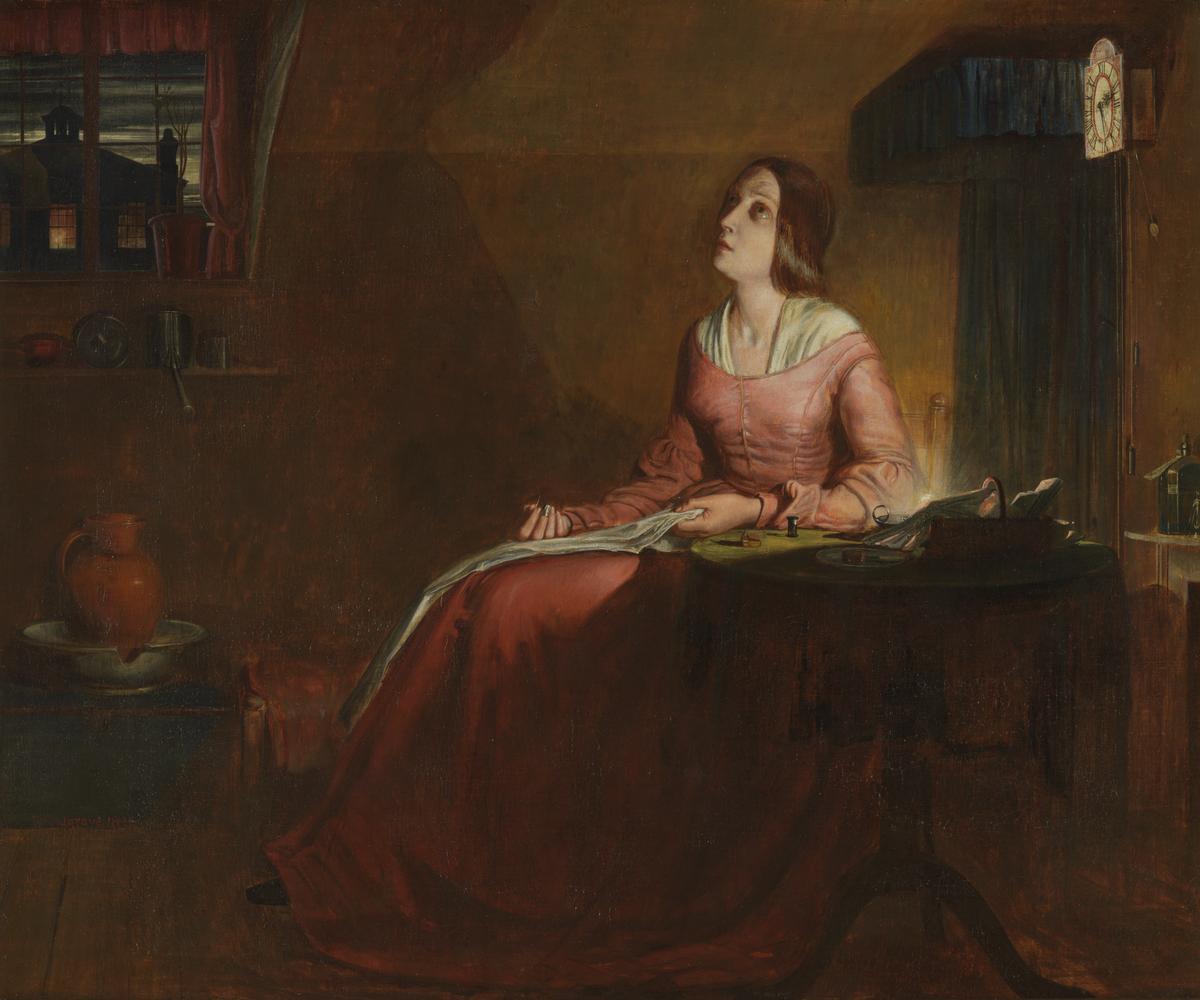
Richard Redgrave, The Sempstress 1846
This painting is the only known version of the lost original which was exhibited at the Royal Academy in 1844 accompanied with lines from Thomas Hood’s popular poem The Song of the Shirt: ‘Oh! men with sisters dear/Oh! men with mothers and wives,/ It is not linen you’re wearing out,/But human creatures’ lives’. The success of the image was largely due to Redgrave’s presentation of the sempstress as a victim in need of salvation. The woman’s pleading expression and posture evoke standard representations of the penitent Magdalene in Old Master painting.
Gallery label, November 2016
7/30
artworks in Art for the Crowd
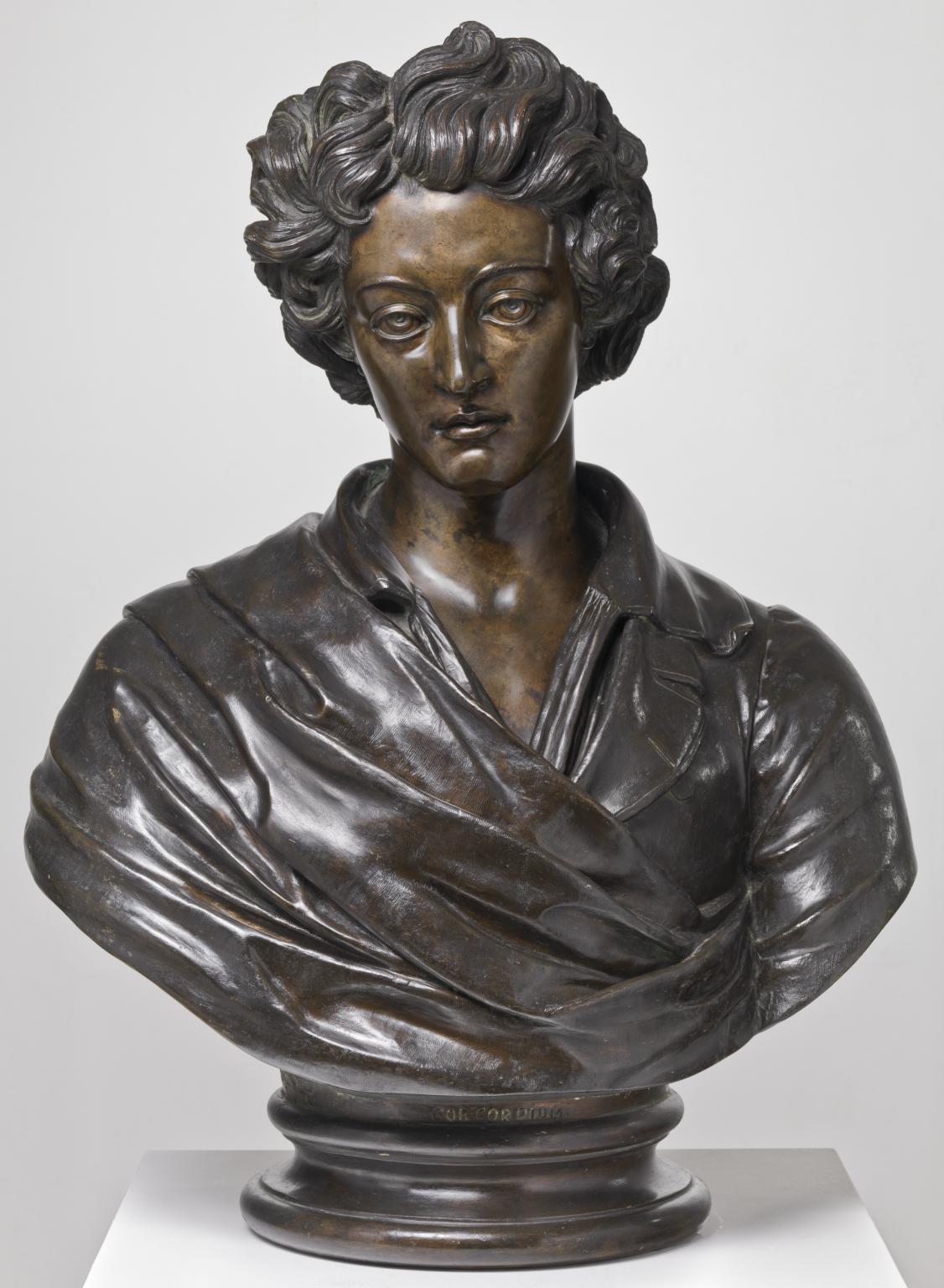
Amelia Robertson Hill, Percy Bysshe Shelley 1882
Hill came from the artistic Paton family and was herself a prominent Scottish sculptor, contributing three figures to the Scott Monument in Edinburgh. There is no reliable likeness of Percy Bysshe Shelley as an adult, and Hill’s fascination for the Romantic poet translated into this monumental idealised bust. A prized possession, she kept it until she died, prominently displayed in the large vestibule of her studio home.
Gallery label, November 2016
8/30
artworks in Art for the Crowd
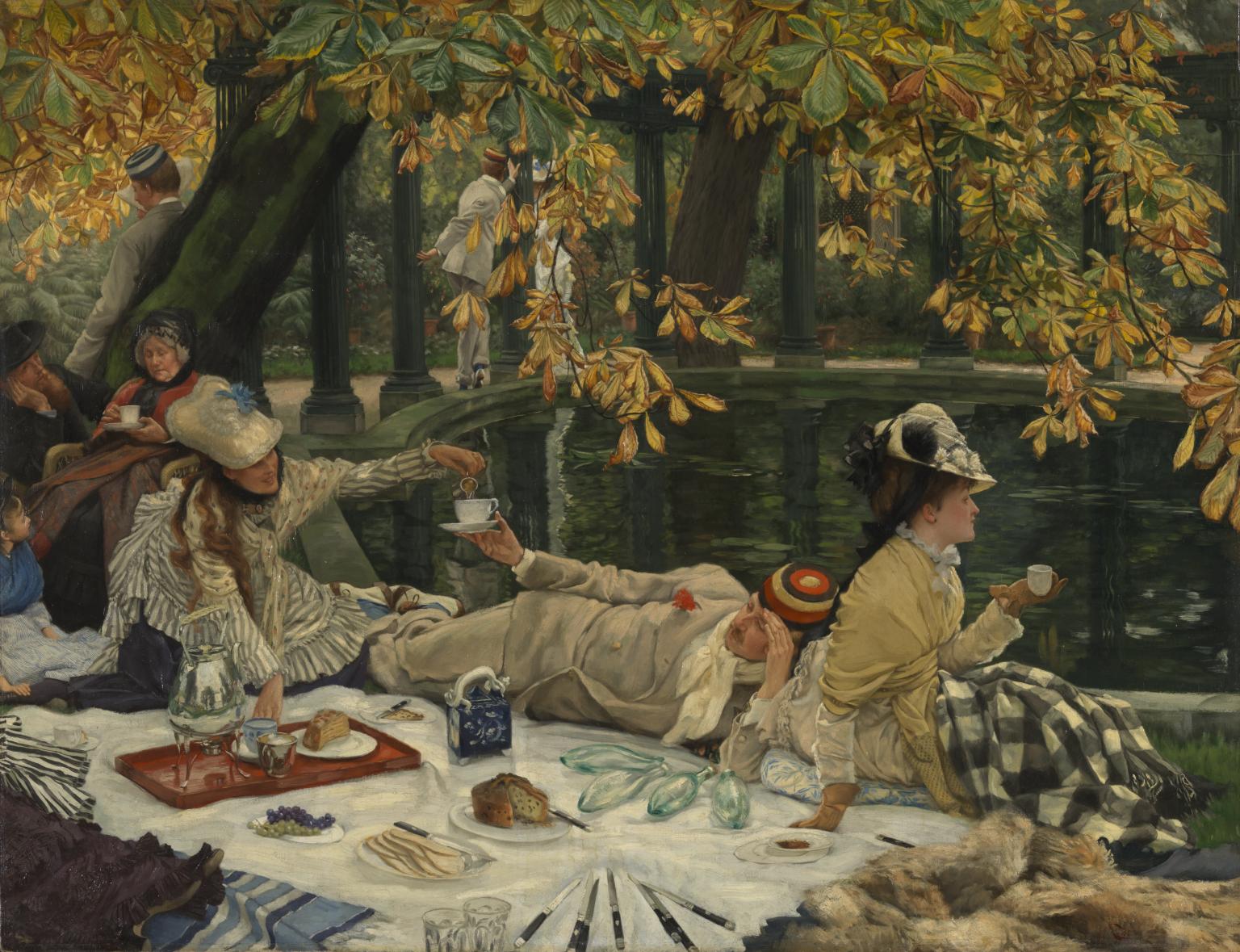
James Tissot, Holyday c.1876
This painting is set in the artist’s garden in the wealthy north London suburb of St John’s Wood. It features its distinctive cast-iron colonnade enclosing a large ornamental fishpond. St John’s Wood was considered a rather louche area and this picture of young people flirting, unnoticed by their sleeping chaperone, was considered by some to be rather vulgar. The men are wearing the caps of I Zingari, an elite amateur cricket club.James Tissot had fled to London in 1870 after the fall of the Paris Commune, and stayed until 1882.
Gallery label, July 2007
9/30
artworks in Art for the Crowd

George Elgar Hicks, Woman’s Mission: Companion of Manhood 1863
These two paintings make up two scenes in a triptych (three-part picture) called Woman’s Mission which was exhibited at the Royal Academy in 1863. The missing section is Guide of Childhood. As a group the pictures represent the same woman in her role as mother, wife and attentive daughter or, as one critic of the time put it: ‘woman in three phases of her duties as ministering angel’. The woman in both pictures bears a striking resemblance to the artist’s depictions of his own wife, Maria.
Gallery label, November 2016
10/30
artworks in Art for the Crowd
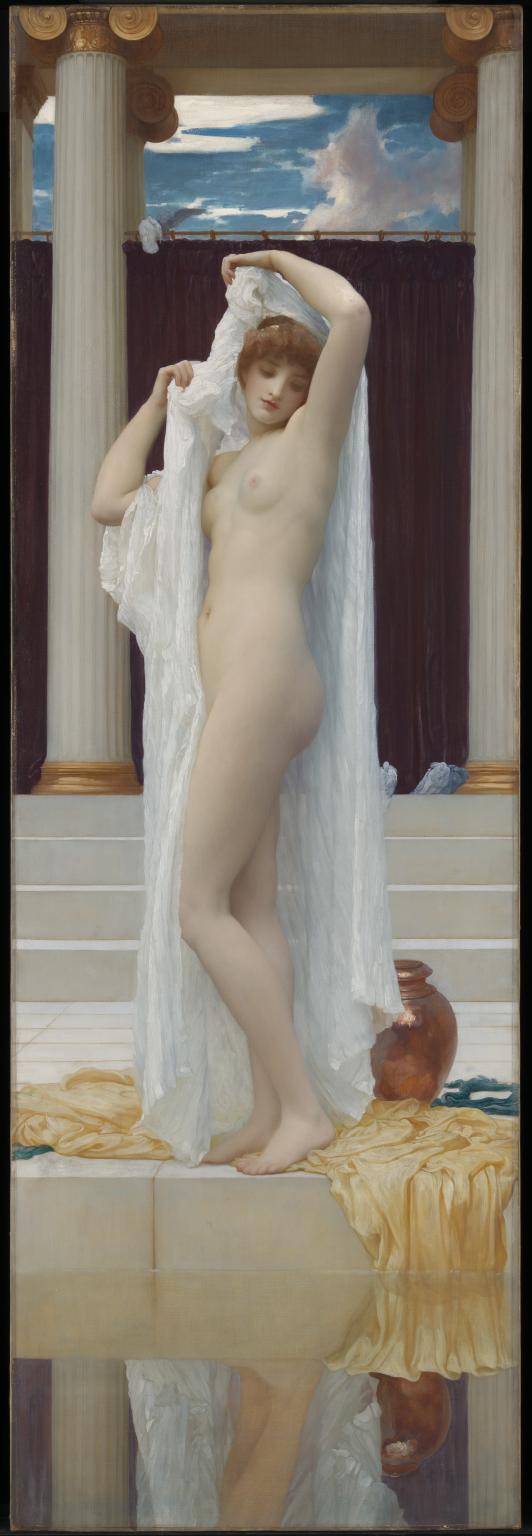
Frederic, Lord Leighton, The Bath of Psyche exhibited 1890
The story of Psyche comes from a tale by the Roman poet Lucius Apuleius. Psyche lived in the golden palace of Cupid, the god of love. Each night Cupid would visit Psyche’s bedroom to have sex with her, without revealing his identity. Here we see Psyche undressing to bathe before Cupid’s arrival, gazing at her reflection. Leighton based Psyche’s pose on an ancient statue of Venus Leaving the Bath that he’d seen in Naples in 1859. He may also have designed the frame, which echoes the architectural details in the background of the picture.
Gallery label, August 2019
11/30
artworks in Art for the Crowd
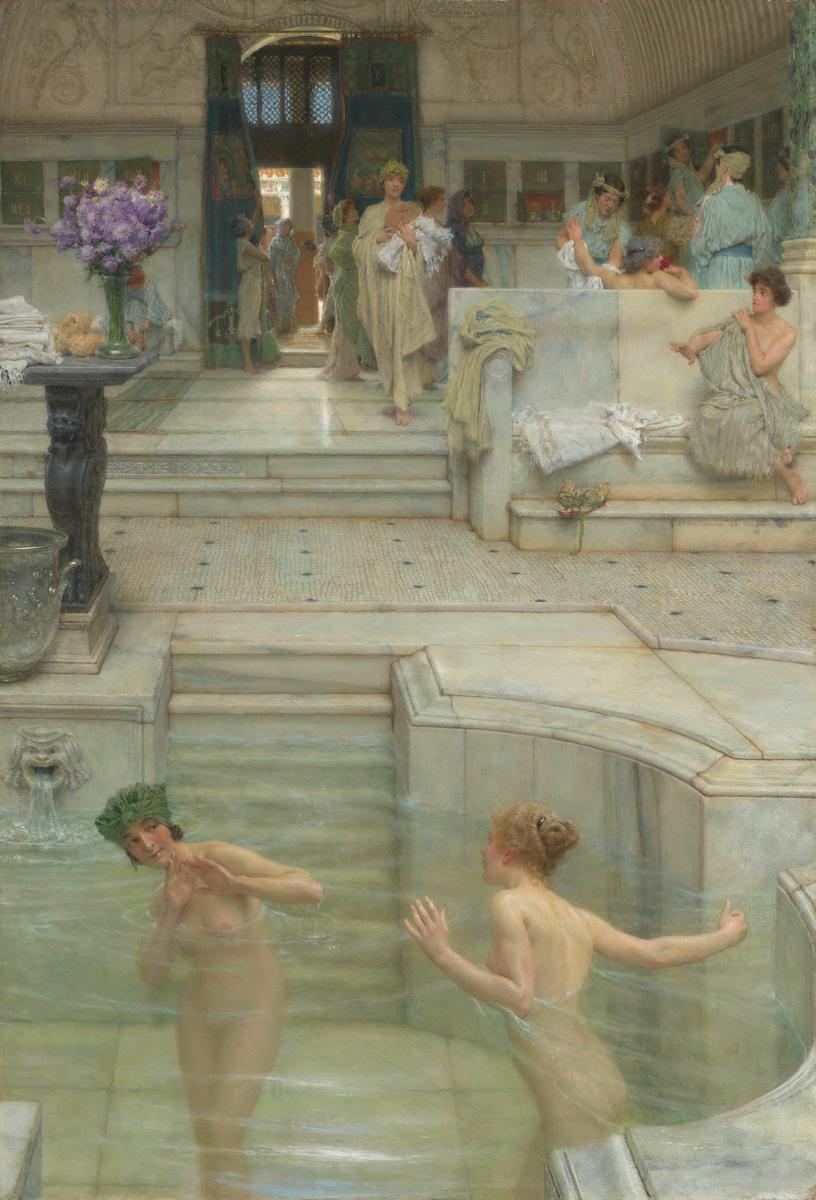
Sir Lawrence Alma-Tadema, A Favourite Custom 1909
This scene is set in the baths at Pompeii. In the foreground one woman playfully splashes another bathing in the ‘frigidarium’, a cold bath. The artist based this work on photographs of the ruins of the Stabian baths, revealed by archaeologists in 1824. He has made them more luxurious by adding a marble floor and walls which would more usually have been found in larger imperial baths. This small work attracted enormous success when it was exhibited and bought immediately for the nation.
Gallery label, February 2016
12/30
artworks in Art for the Crowd
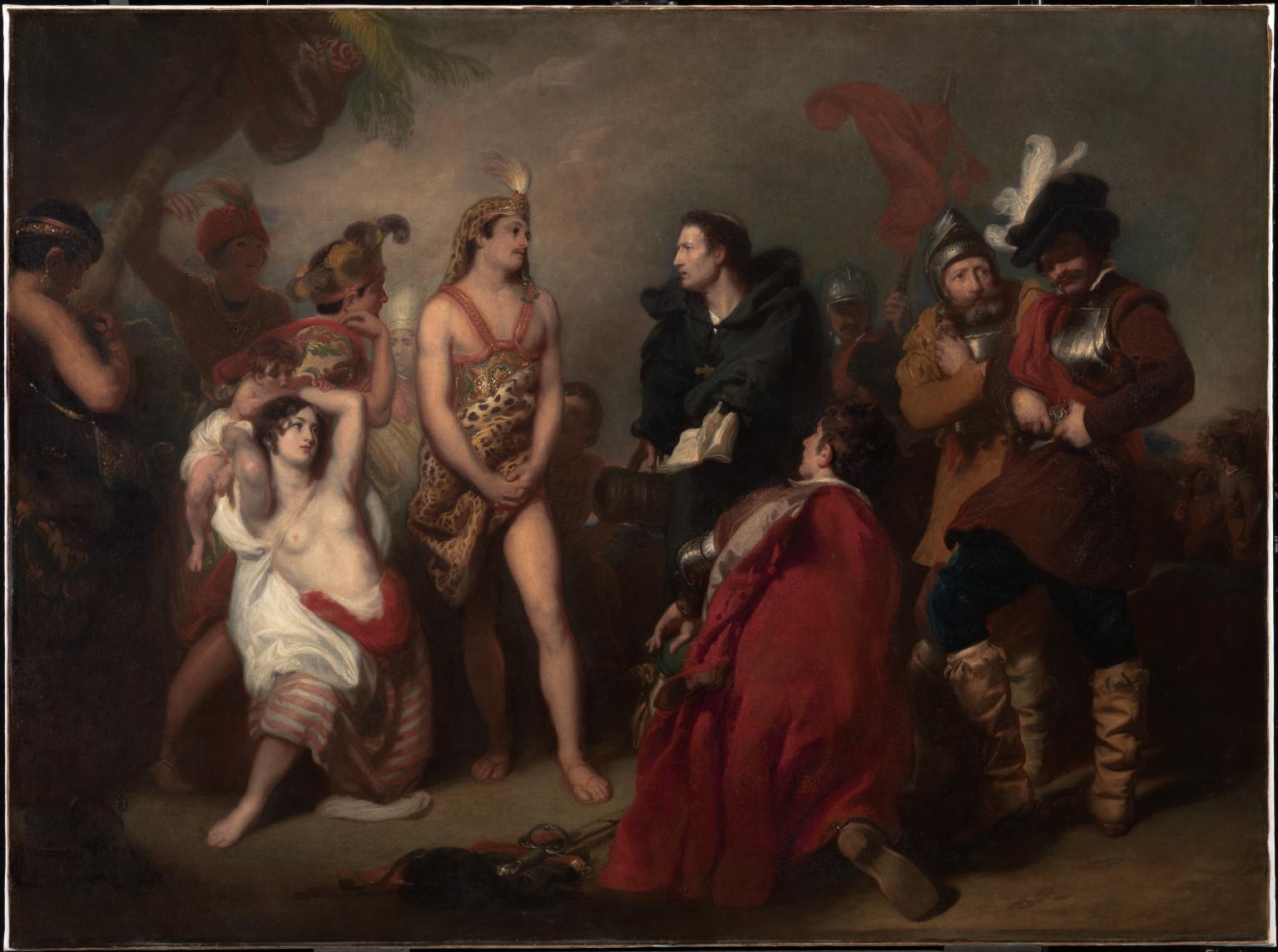
Henry Perronet Briggs, The First Interview between the Spaniards and the Peruvians exhibited 1827
Henry Briggs portrays the first encounter in 1552 between a group of Incas and Spanish conquistadors seeking to take over their land and convert them to Catholicism. While Emperor Atahualpa receives them openly, General Francisco Pizarro secretly draws a gun that will begin a massacre of seven thousand Indigenous people. When the painting was first exhibited, some viewers praised the artistic approach, rather than praising the anti-imperial theme. Briggs imagines the Incas in the tradition of classical nude paintings.
Gallery label, May 2023
13/30
artworks in Art for the Crowd
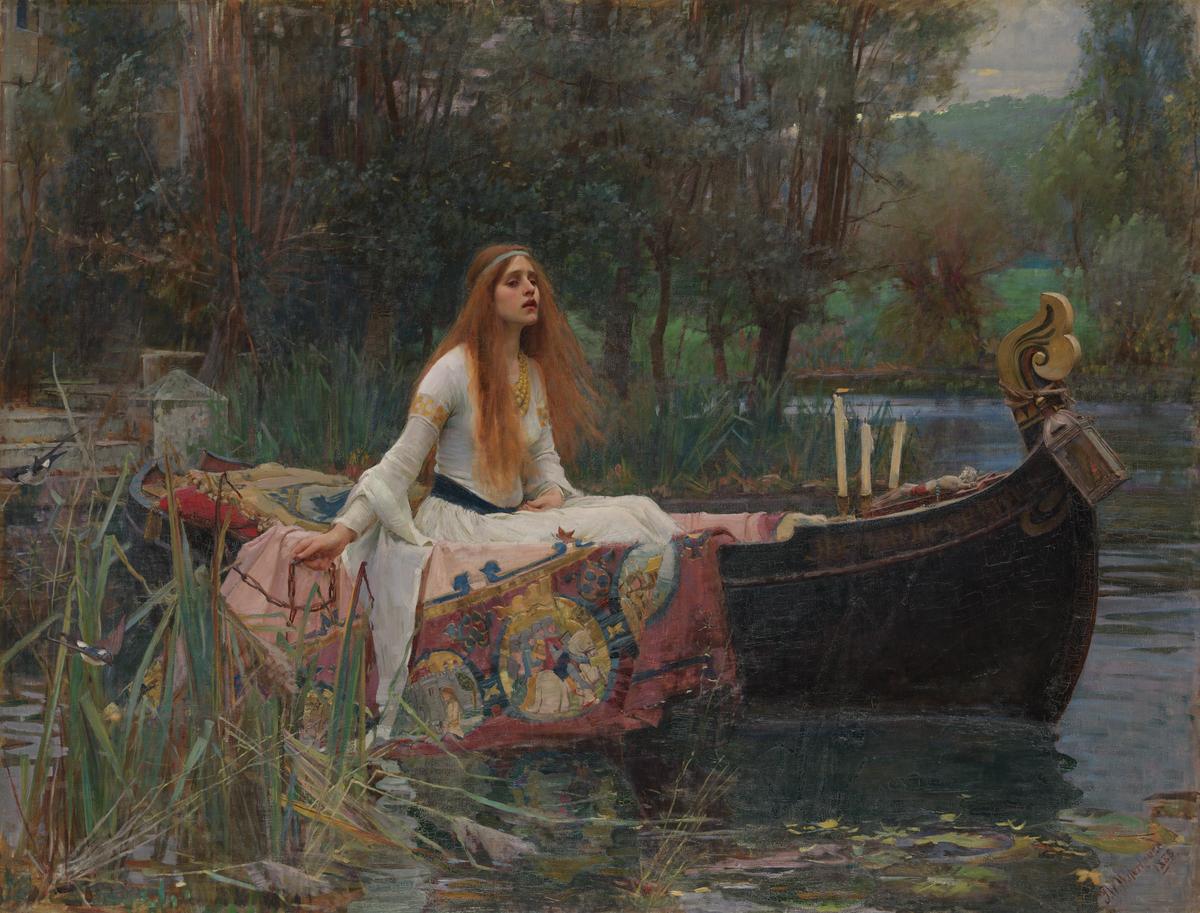
John William Waterhouse, The Lady of Shalott 1888
English poet Alfred Tennyson’s poem The Lady of Shalott (1833) describes a heroine confined to a tower and cursed to die if she looks directly upon the outside world. By using a mirror, she embroiders scenes of passers-by. When the Lady glimpses the Arthurian knight Sir Lancelot she falls in love and defies the curse. Out in the cold world, on the point of death, she frees a boat to seek him. Lancelot is visible on her embroidery, and familiar Pre-Raphaelite clues foretell her fate: swallows fly low as the wind blows her hair and extinguishes the candles.
Gallery label, March 2022
14/30
artworks in Art for the Crowd
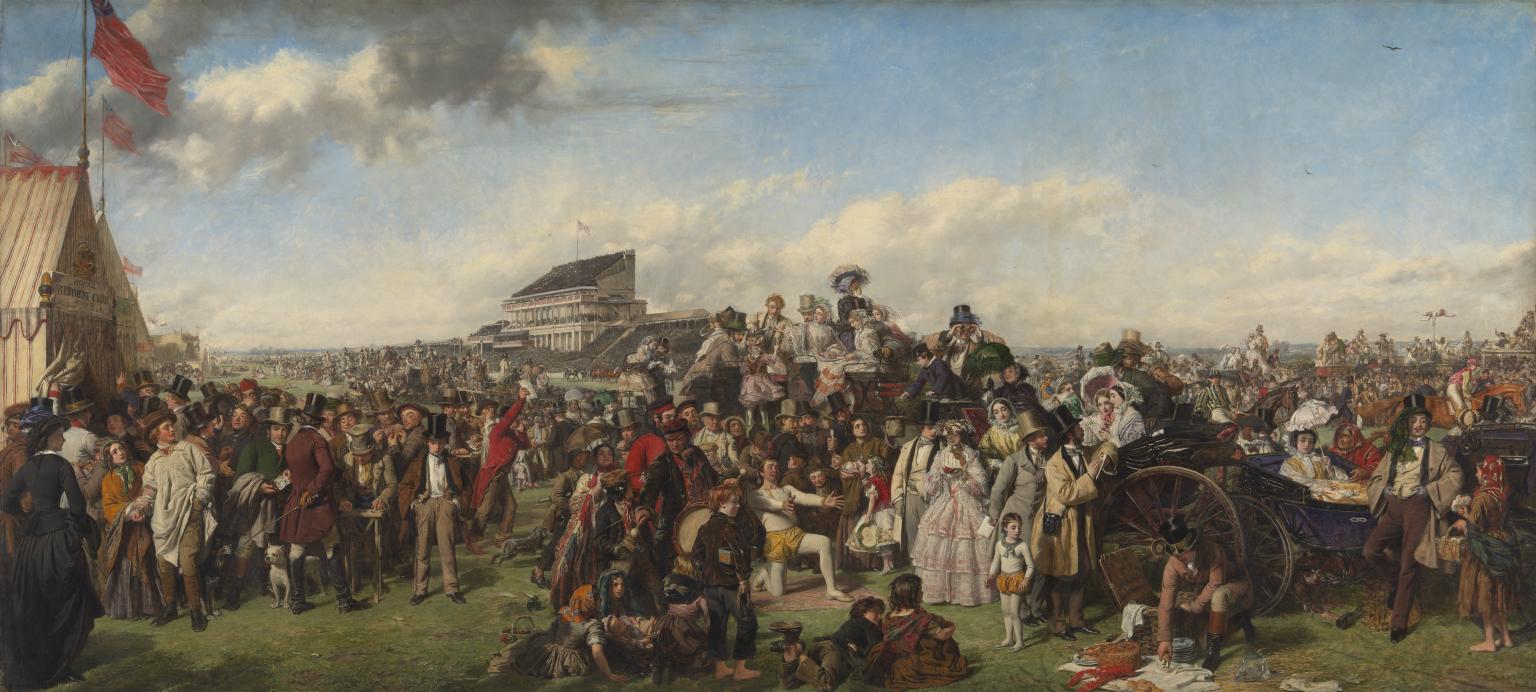
William Powell Frith, The Derby Day 1856–8
The Derby Day was first exhibited in 1858 at the Royal Academy in London. It was so popular that a barrier had to be put up to protect the work. The annual Derby at Epsom Downs racecourse in Surrey, south-east England attracted huge crowds. Frith’s detailed panorama focuses on the day’s entertainment, relegating the racing to the margins. On the left, a group of men in top hats bet on a game-playing ‘trickster’. In the centre, a crowd of bare-footed children watches an acrobat and his son. Behind them are carriages filled with racegoers enjoying Derby day.
Gallery label, November 2019
15/30
artworks in Art for the Crowd
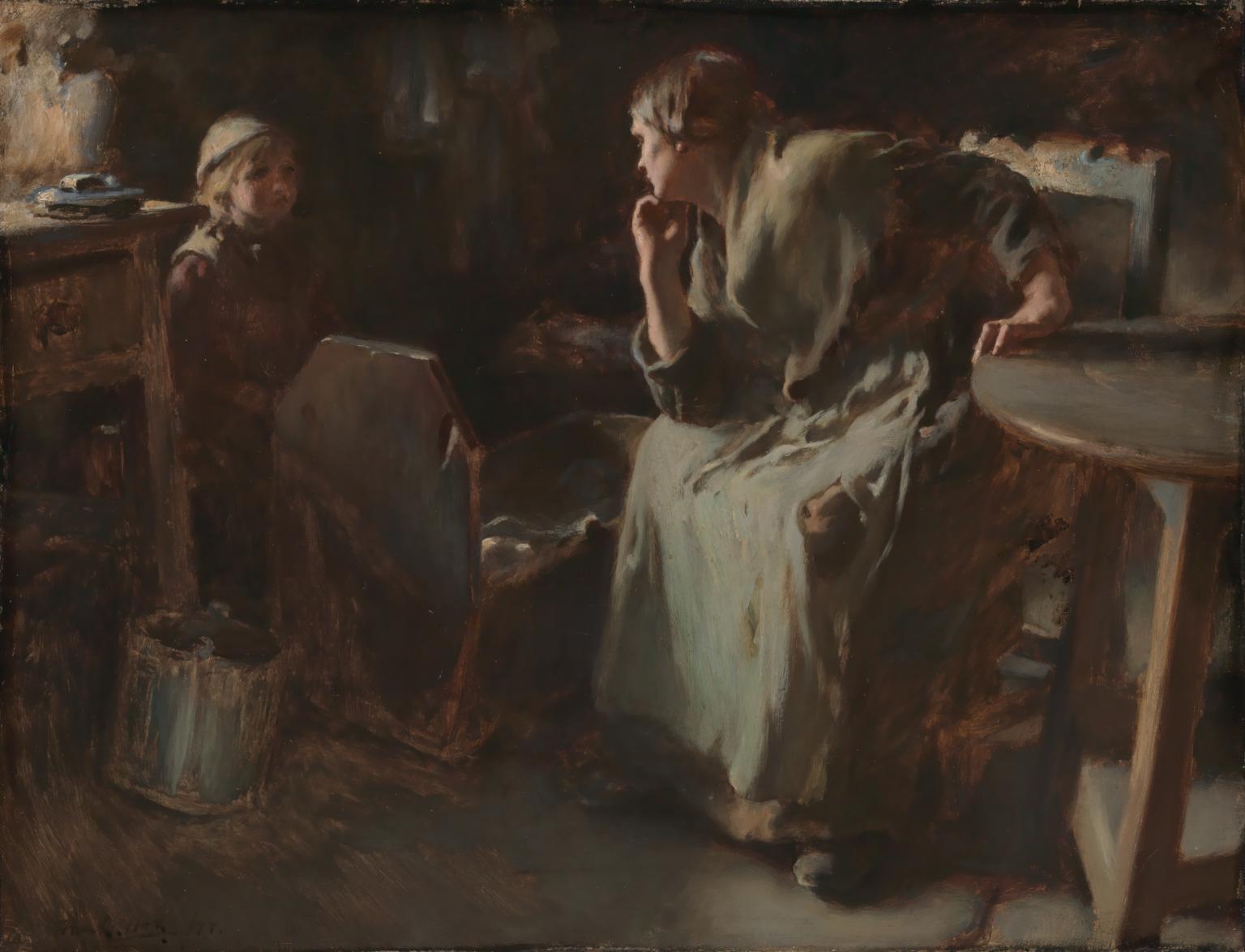
Frank Holl, Hush! 1877
Child death was a common occurrence in Victorian society. In Hush a mother devotedly watches over her sick baby, her anxiety mirrored in the face of an older child. This painting has a companion piece, Hushed which goes on to depict the death of the baby. Frank Holl confronts his subject directly, without sentimentality. The sombre colouring and the strong contrasts between light and shade heighten the grim mood.
Gallery label, May 2023
16/30
artworks in Art for the Crowd
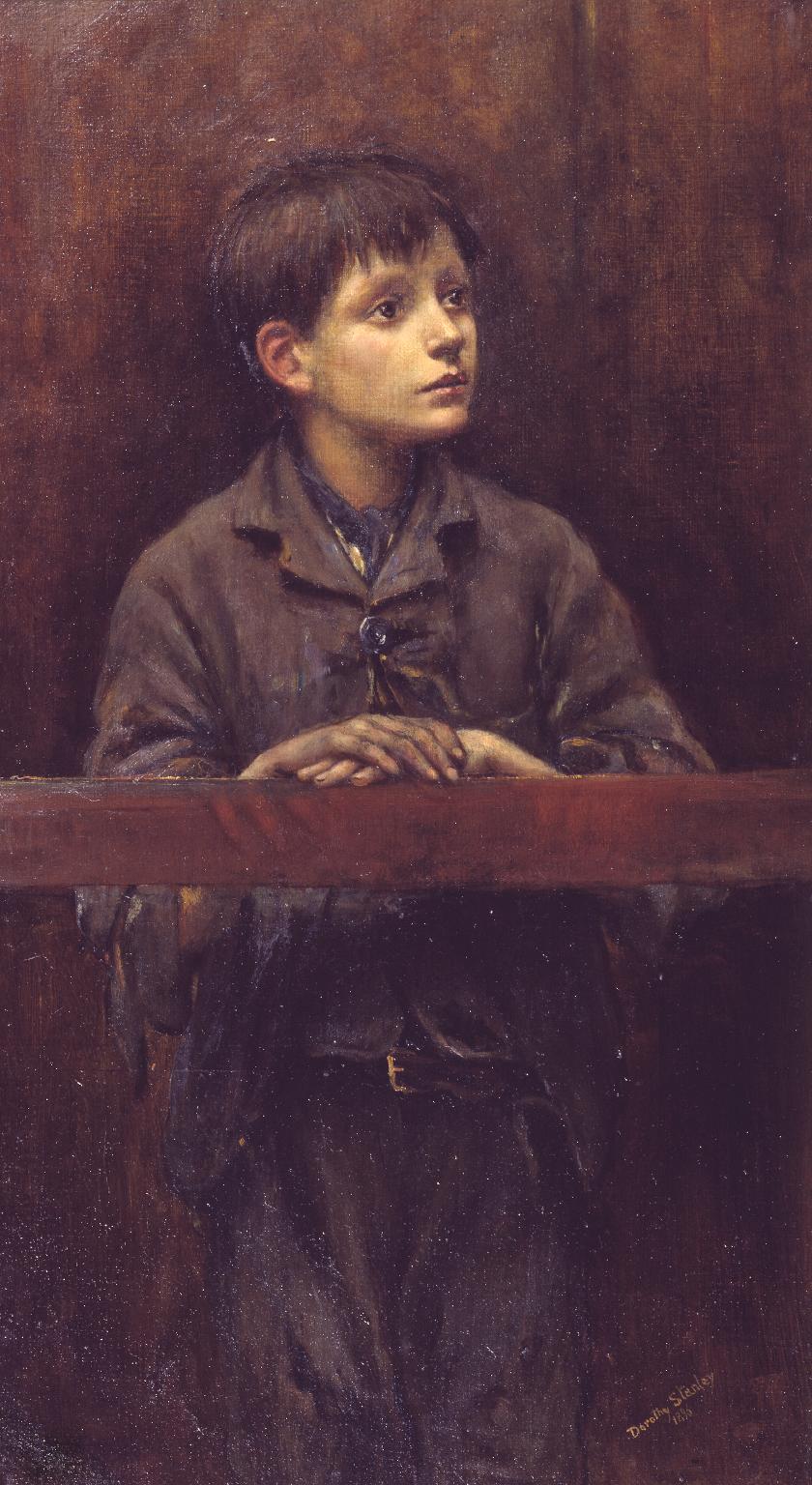
Lady Dorothy Stanley, His First Offence 1896
Dorothy Stanley was well-known for painting London street children. She sketched them in all kinds of activities; ‘walking along the streets you can learn far more than in your studio’. This boy is one of several that Stanley got to know and employed as regular models for her paintings. The court setting recalls literary characters such as Oliver Twist and reflects public concerns and campaigns that were slowly reforming child justice. However, the title reference to a ‘first offence’ distinguishes this boy from repeat offenders, to appeal to popular prejudices about the ‘deserving’ and ‘undeserving’ poor.
Gallery label, May 2023
17/30
artworks in Art for the Crowd
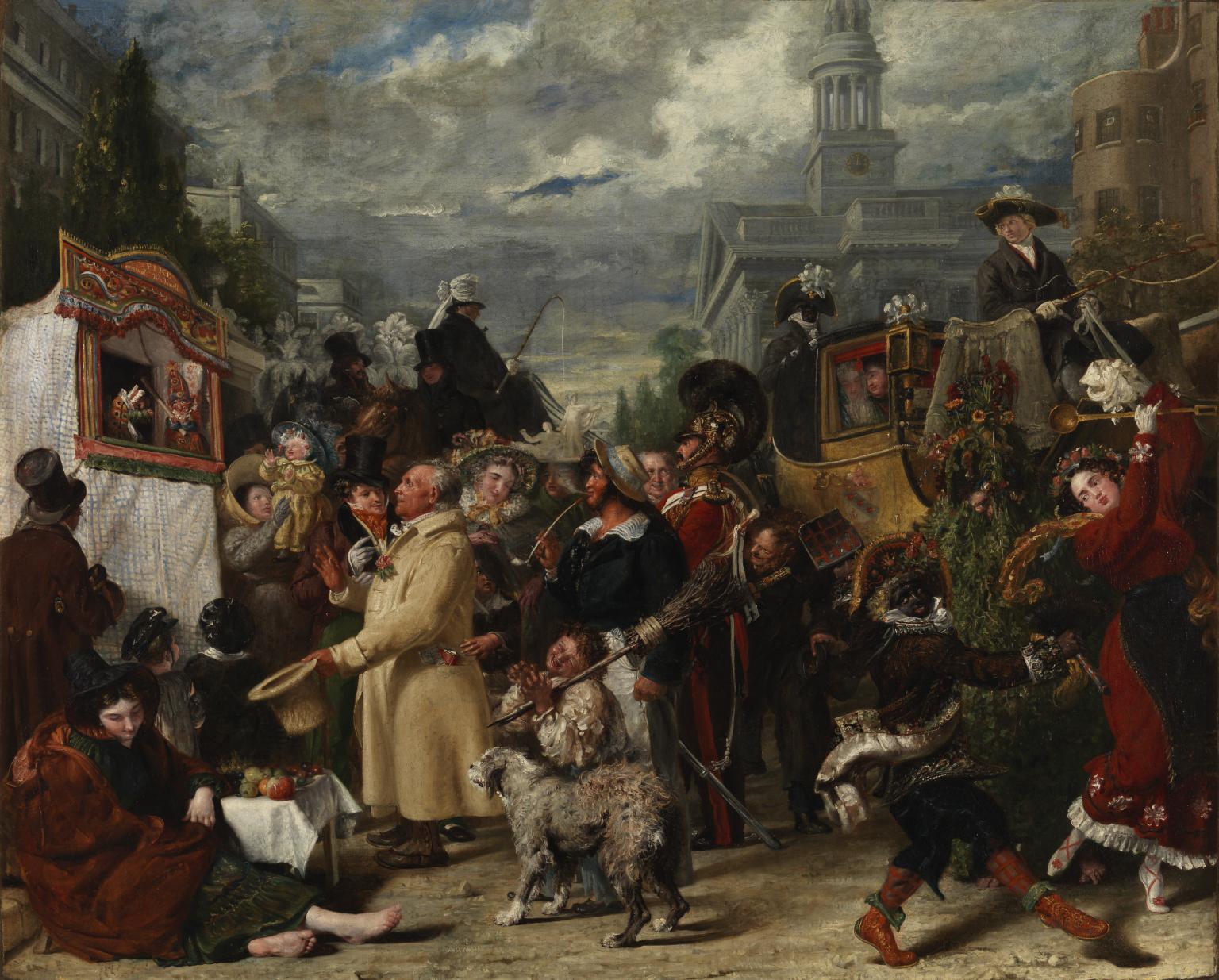
Benjamin Robert Haydon, Punch or May Day 1829
Benjamin Haydon thought of calling this painting ‘Life’, hoping to capture a cross-section of London. A hearse nearly collides with a marriage coach and the newly-weds contrast with the violent couple in the popular puppet show, Punch and Judy. Haydon made this work five years before the abolition of Slavery in the British Empire. He deliberately placed the upright Black coachman with the caricatured performance of the soot-blackened chimney sweep close together, so viewers would connect the two figures. Although he later expressed regret at his beliefs, at the time Haydon held racist ideas about racial hierarchies.
Gallery label, May 2023
18/30
artworks in Art for the Crowd
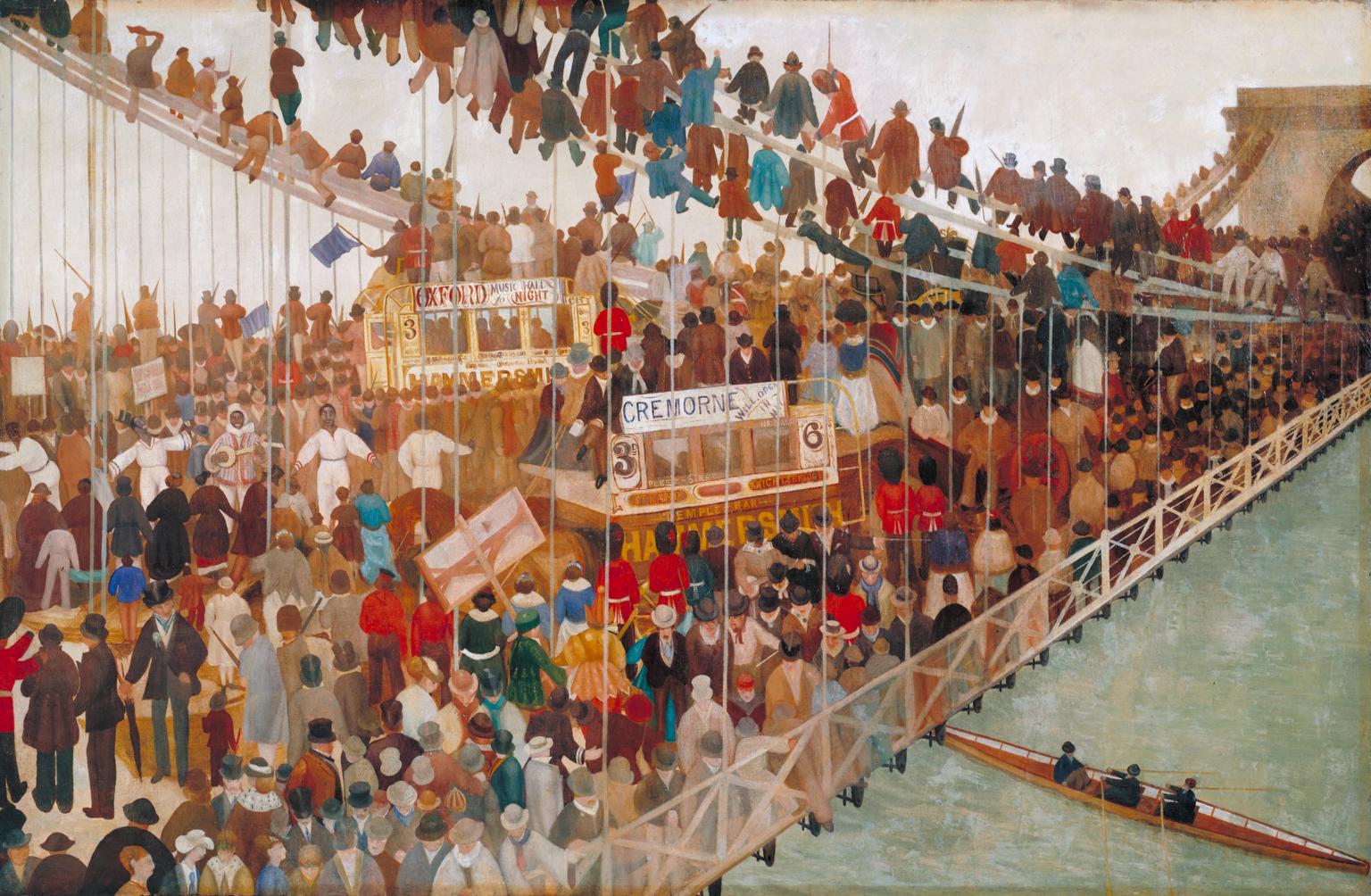
Walter Greaves, Hammersmith Bridge on Boat-race Day c.1862
Walter Greaves was the son of a Thames boatman and a self-taught painter. A dense crowd is assembled on Hammersmith suspension bridge to watch the annual university boat race. There were fears that the bridge was not strong enough to support the weight of heavy traffic when around 12,000 people gathered there for the event in 1870. Greaves captures the diversity of London at this time, although this work, painted in his early style, simplifies and caricatures the individuals in the crowd.
Gallery label, May 2023
19/30
artworks in Art for the Crowd

Frank Holl, Hushed 1877
Child death was a common occurrence in Victorian society. Hushed is a companion piece to Holl’s painting Hush! And shows the death of a baby. The mother covers her face with her hand in a gesture of grief, while her other child appears bewildered. Frank Holl confronts his subject directly, without sentimentality. The sombre colouring and the strong contrasts between light and shade heighten the grim mood.
Gallery label, May 2023
20/30
artworks in Art for the Crowd

Unknown artist, Britain, Unknown Man c.1830–40
We don’t know the identity of the young man represented here or the artist who painted this work. The sitter’s luxurious jacket and waistcoat are Albanian, but his turban and loose trousers appear to be Turkish or north African. At the time, artists often depicted Black people in costume and not named. The picture follows artistic conventions of portraiture, with its focus on the man’s facial features and high-status dress. The combination of different styles suggests he might be intended to represent a character from Romantic poetry.
Gallery label, May 2023
21/30
artworks in Art for the Crowd
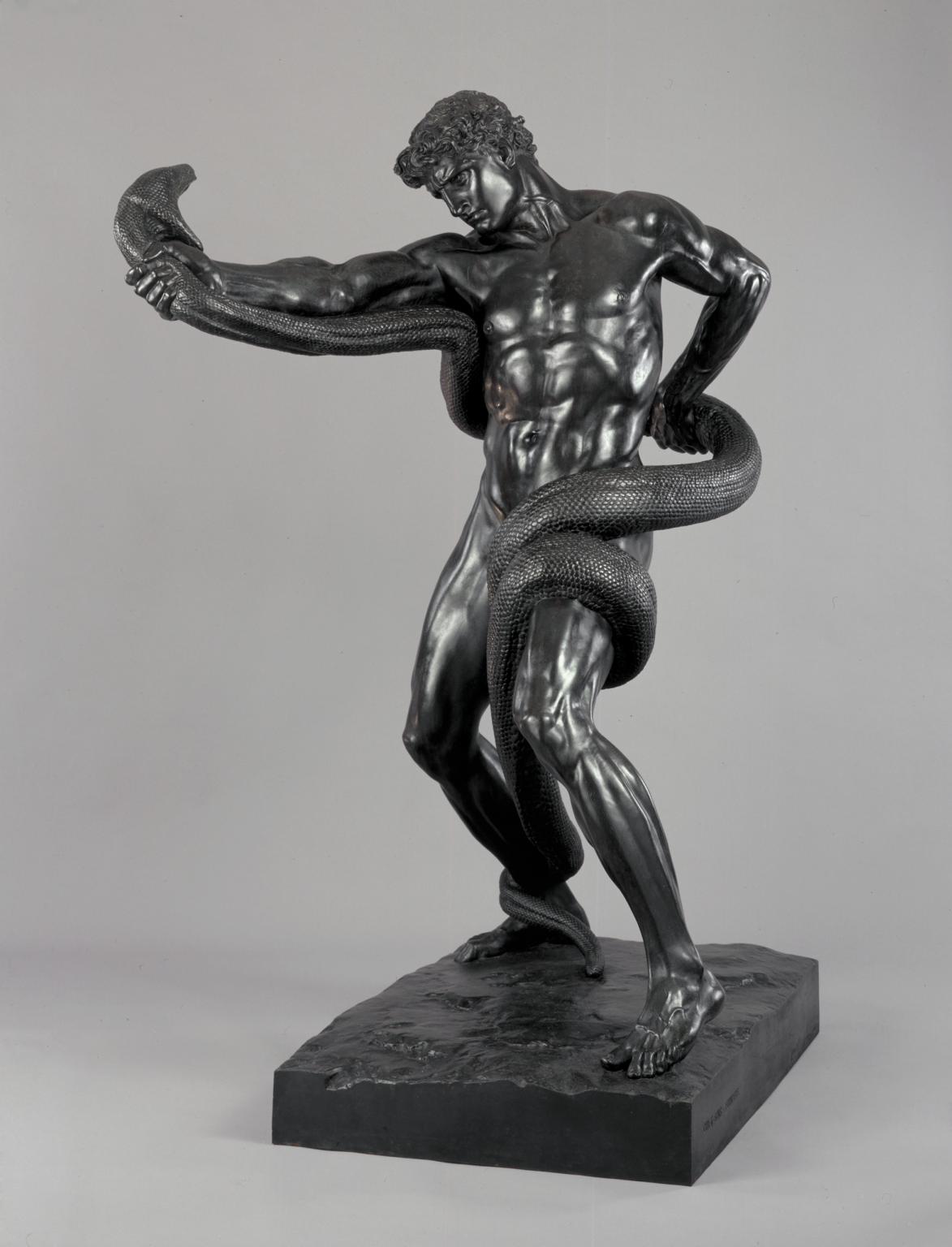
Frederic, Lord Leighton, An Athlete Wrestling with a Python 1877
This is the earlier of Frederic Leighton’s only two life-size sculptures, both made with the assistance of Thomas Brock. In subject and scale it was intended as a challenge to one of the greatest classical sculptures, The Laocoön, which shows three men being crushed by sea serpents. Frederic Leighton was a pioneer of what became known as the ‘New Sculpture’ movement in Britain. This fresh approach looked back to classical sculpture while focusing on the naturalism of the body through careful modelling of the surface. This coincided with a revival of interest in bronze, the lost wax technique used here allowing for precision in the treatment of form.
Gallery label, November 2016
22/30
artworks in Art for the Crowd
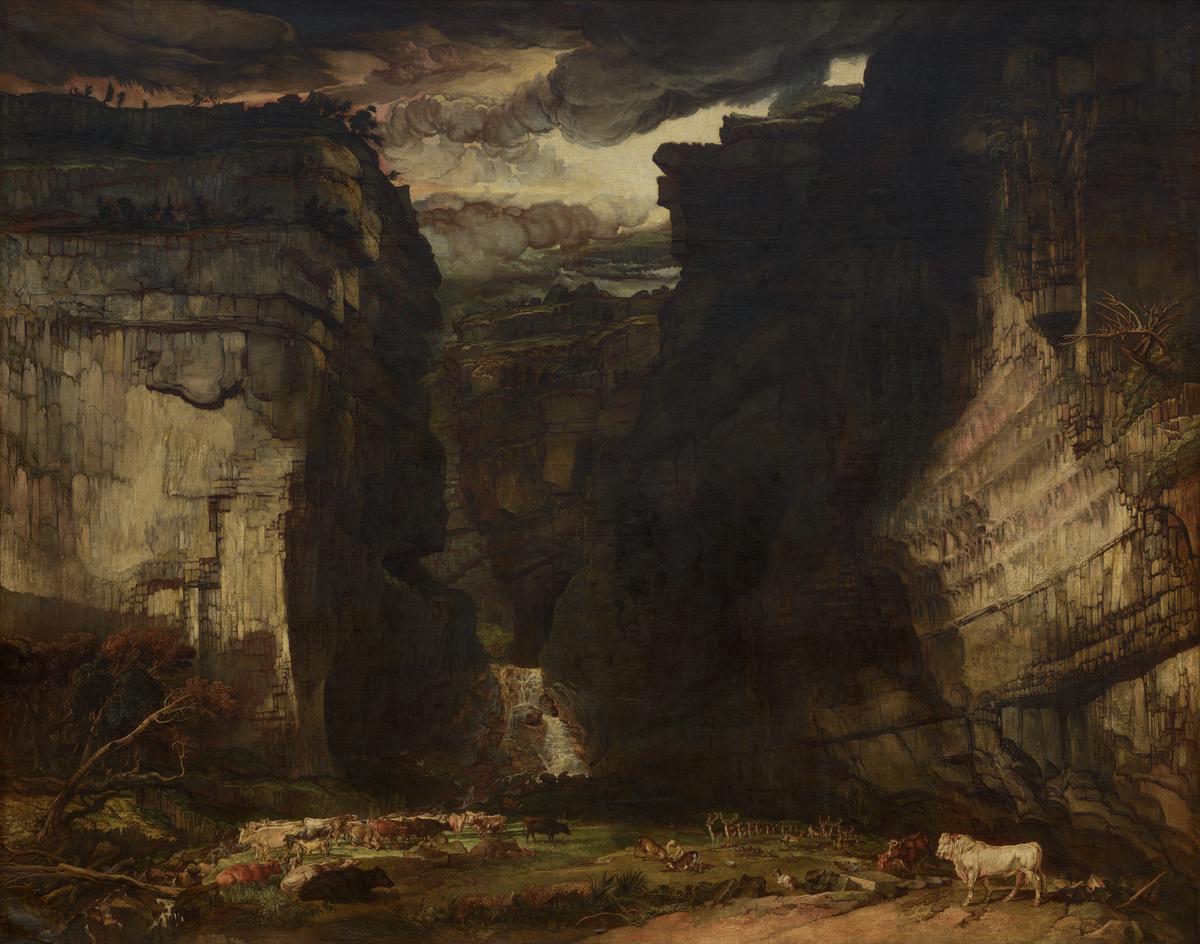
James Ward, Gordale Scar (A View of Gordale, in the Manor of East Malham in Craven, Yorkshire, the Property of Lord Ribblesdale) ?1812–4, exhibited 1815
Gordale Scar is a bank of limestone cliffs near Settle, Yorkshire. Ward painted this picture for Lord Ribblesdale, a local landowner. He emphasised the height and scale of the cliffs by subtly manipulating the perspective. In the foreground he shows deer and cattle, including a white bull from the (originally wild) Chillingham herd, who appears to guard the cleft of Gordale Beck. Working in the last years of the Napoleonic wars, Ward aimed to depict a national landscape, primordial and unchanging, defended by ‘John Bull’ in animal form. His painting also epitomised the awe-inspiring qualities of the fashionable ‘Sublime’ landscape.
Gallery label, March 2010
23/30
artworks in Art for the Crowd
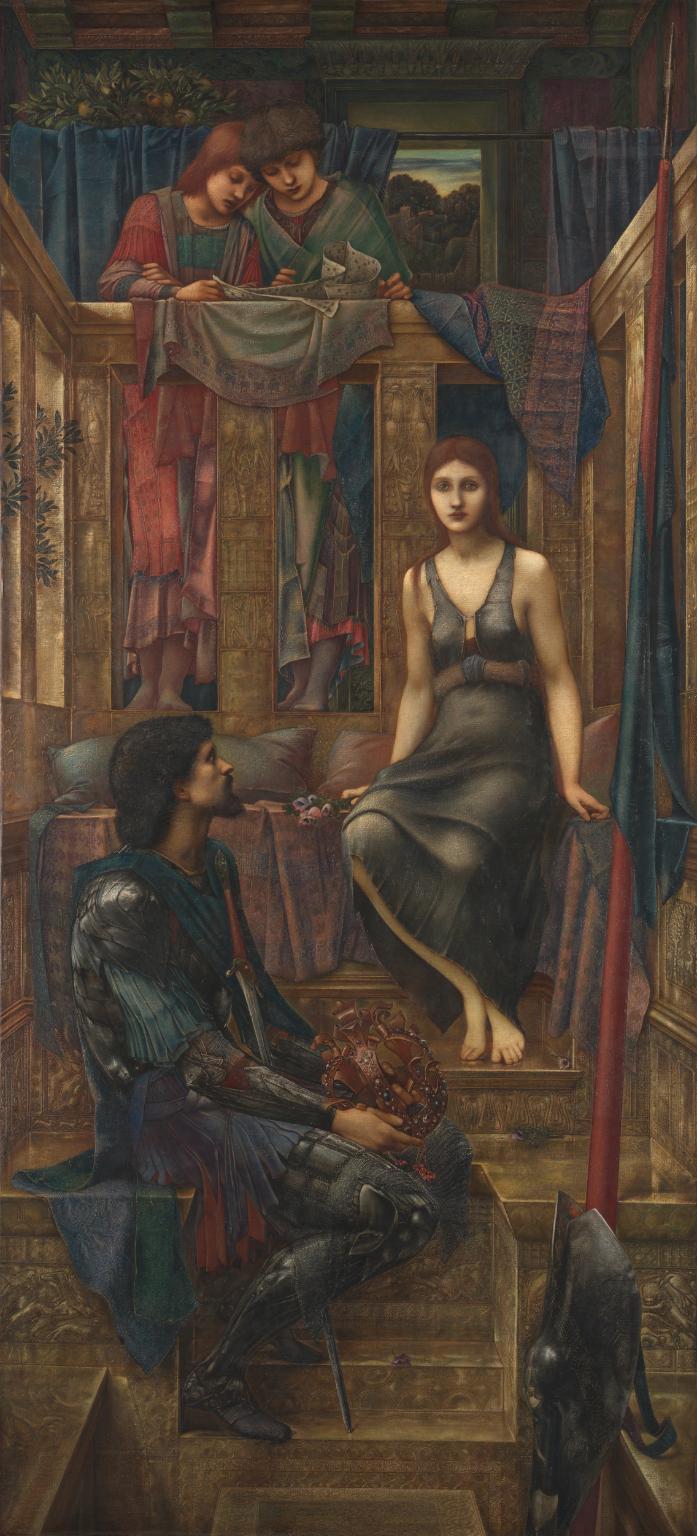
Sir Edward Coley Burne-Jones, Bt, King Cophetua and the Beggar Maid 1884
This work was based on Alfred Tennyson’s poem ‘The Beggar Maid’. King Cophetua of Ethiopia falls in love with Penelophon, a young woman he sees begging for money. They marry, and she becomes Queen. This work was considered Burne-Jones’s greatest achievement. Critics praised it for its technical skill and for the message that love is more important than wealth and power. Through this painting and its reproduction as a print, Burne-Jones became seen in Europe as the most important symbolist painter of his generation.
Gallery label, August 2019
24/30
artworks in Art for the Crowd
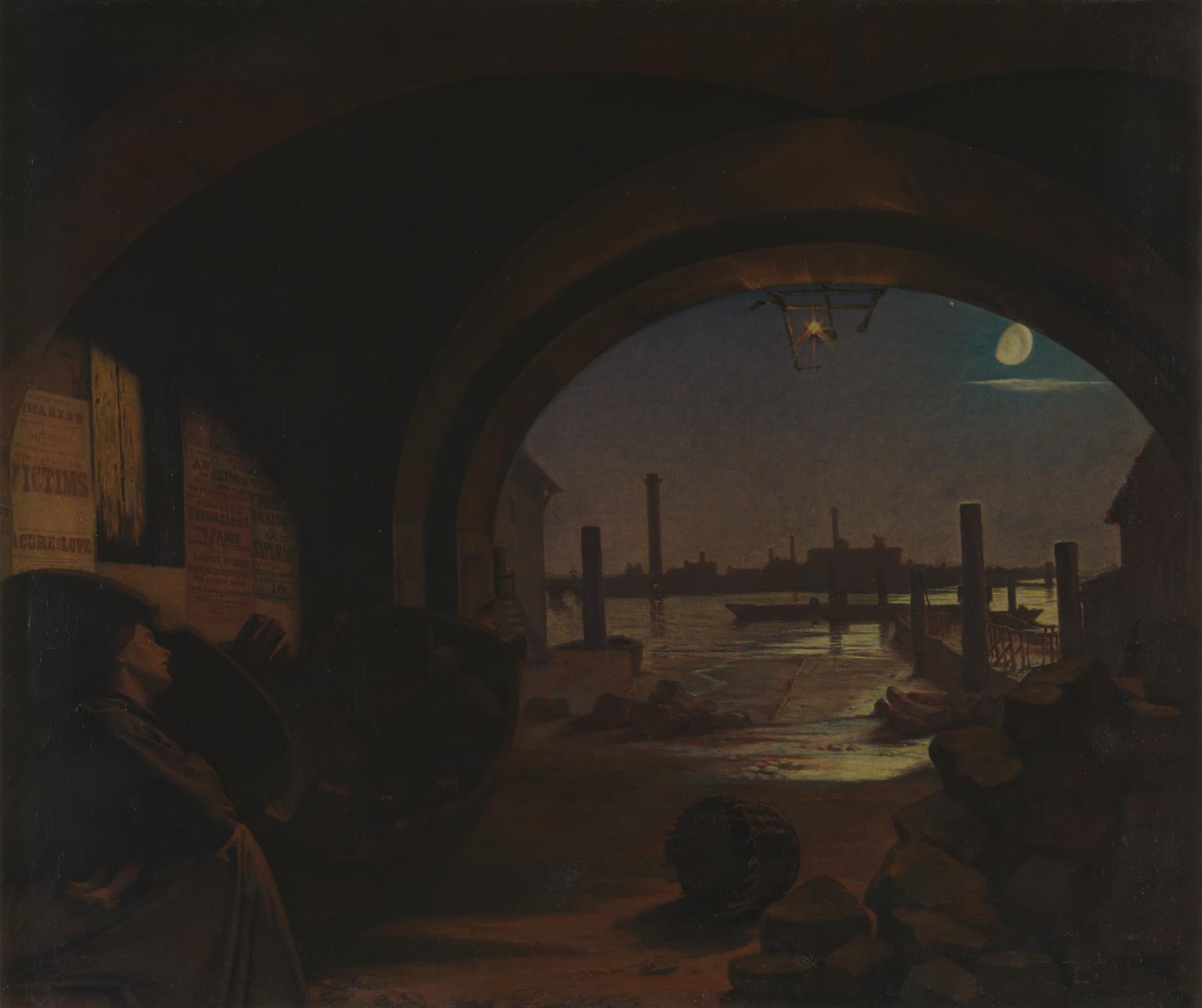
Augustus Leopold Egg, Past and Present, No. 3 1858
This painting forms part of a series of three which considers the consequences of love outside marriage In Victorian Britain. Past and Present No.1 and Past and Present No. 3 show ‘Present’ five years later, two weeks after the husband has died of despair. Identical moons indicate that they take place at the same moment. The two girls comfort each other. The homeless mother shelters under the Adelphi arches, by the River Thames in London, holding the baby that resulted from her affair. The posters for two plays, ‘Victims’ and ‘A Cure for Love’, and ‘Pleasure Excursions to Paris’, are ironic comments on her situation.
Gallery label, May 2023
25/30
artworks in Art for the Crowd
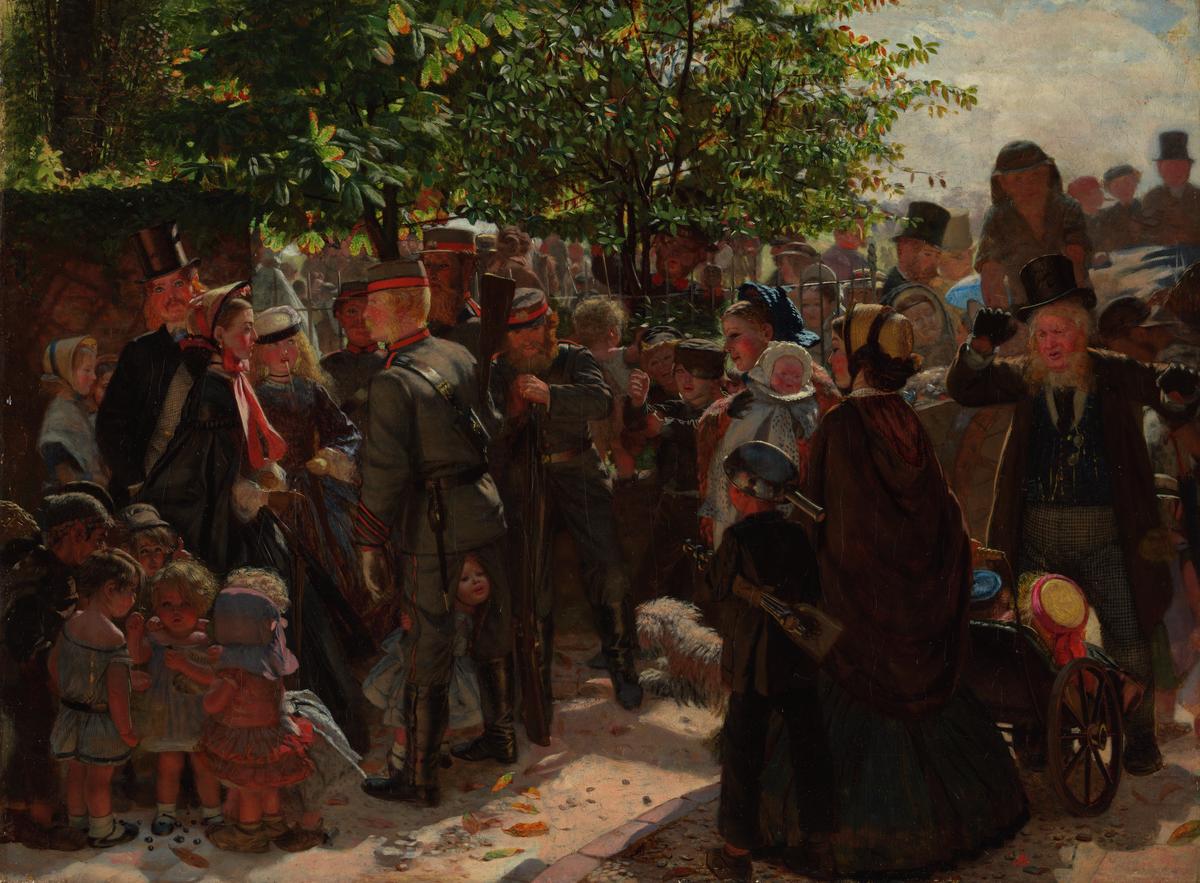
Arthur Boyd Houghton, Volunteers 1861
This painting shows a group of infantrymen recruiting for the Volunteer Movement which swept Britain between 1859 and 1860. It was fuelled by the revolutions in Continental Europe in 1848 and British mistrust of France.As Houghton shows in this painting, the volunteers were mainly recruited from the middle classes. They felt it was their patriotic duty to enlist in one of the volunteer battalions. But there appears to be a general lack of interest from the civilians in this painting. The gentleman on the left is carefully not looking at the soldiers.
Gallery label, July 2007
26/30
artworks in Art for the Crowd
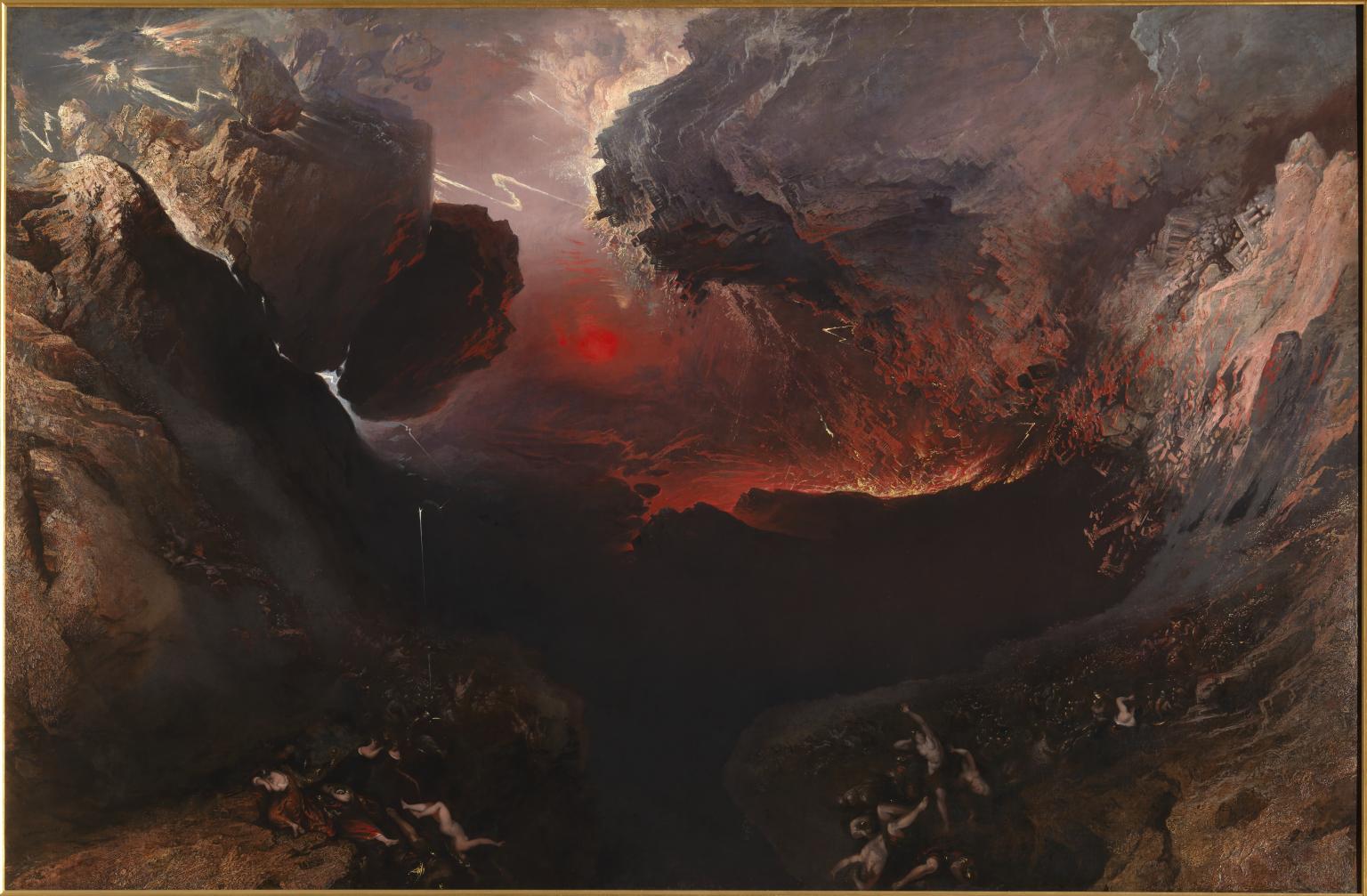
John Martin, The Great Day of His Wrath 1851–3
American filmmaker and stop-motion animator Ray Harryhausen (1920 – 2013) was inspired by Martin’s dramatic works. He called this painting ‘an incredible, visionary masterpiece, depicting catastrophe and conveying an overwhelming sense of destruction … it resembles a frame from a movie – this time, perhaps, a blockbuster disaster movie’.
Gallery label, August 2019
27/30
artworks in Art for the Crowd
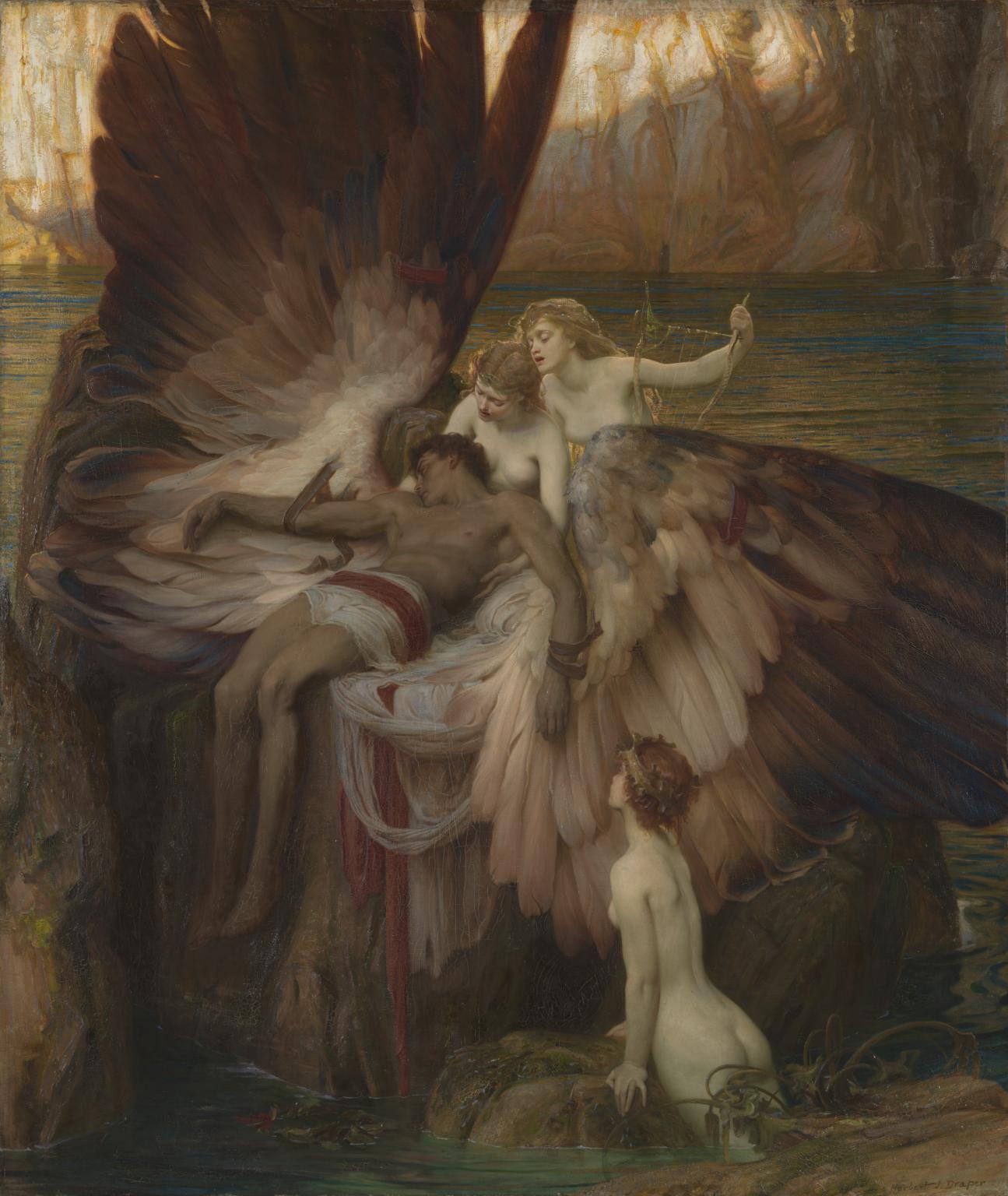
Herbert Draper, The Lament for Icarus exhibited 1898
Icarus’s father, the inventor Daedalus, made wings that allowed them to fly away from their island prison. The exhilarated Icarus forgot warnings and soared too close to the sun, melting the wax that secured the feathers, and he fell to his death. Charles Darwin’s publication of On the Origin of Species in 1859 gave an optimistic picture of the present and future evolution of humankind, but it also introduced ideas of a deep and obscure past. Art and literature took up this theme of origins, man’s mythical history and struggles between animal and human nature.
Gallery label, February 2016
28/30
artworks in Art for the Crowd

Frederick Walker, The Vagrants 1868
Frederick Walker painted this after seeing gypsies on Clapham Common, south London. He tried to use the gypsies as models but found that they had moved on. Instead his sister Polly posed for the standing woman. The background landscape was painted in the open air at Beddington, near Croydon.Walker originally made The Vagrants as an illustration in the magazine Once a Week. He worked it up into an oil painting to show at the Royal Academy. It failed to find a buyer, but it had a great influence on younger artists who specialised in social-realist subjects.
Gallery label, July 2007
29/30
artworks in Art for the Crowd
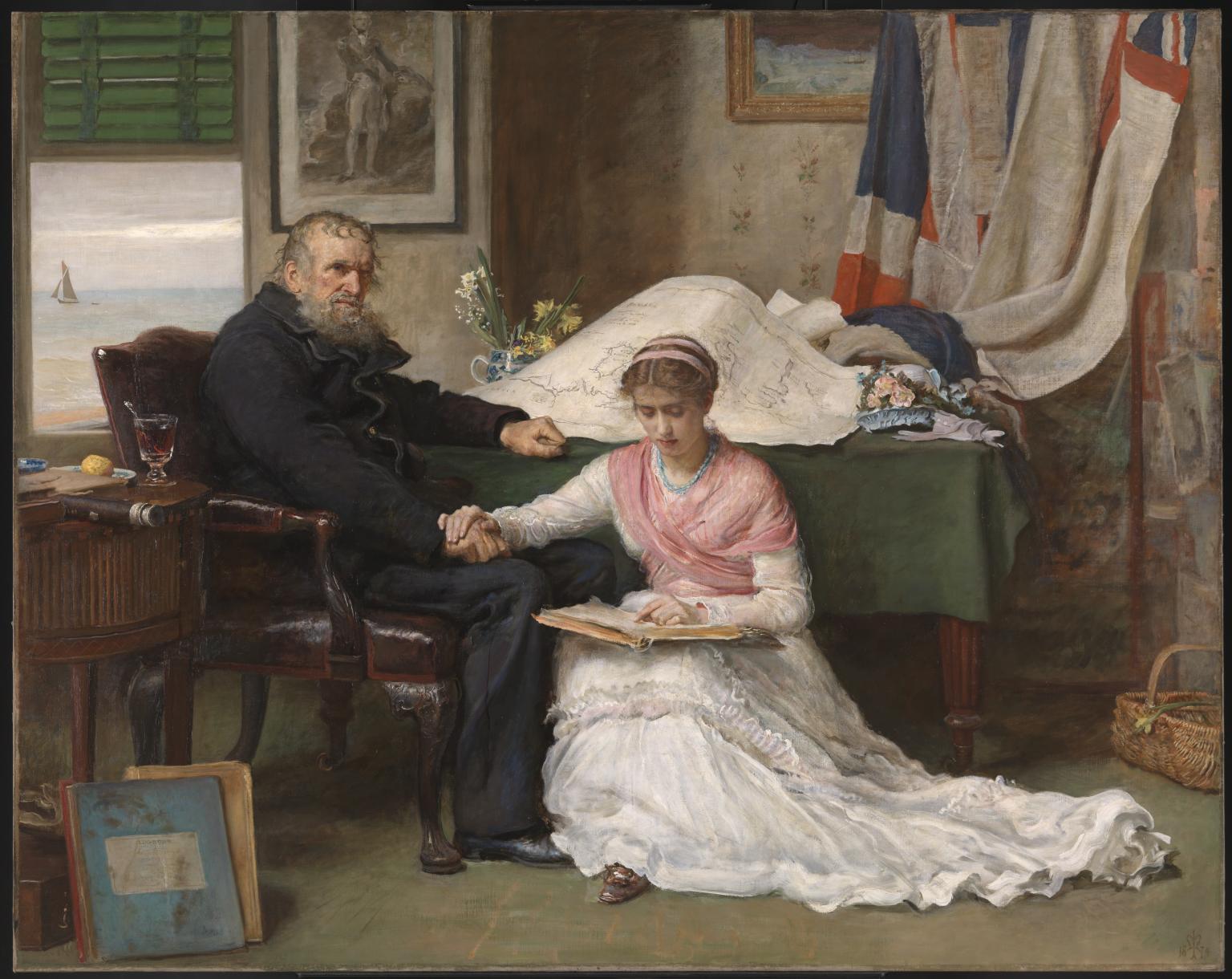
Sir John Everett Millais, Bt, The North-West Passage 1874
The north-west passage is a dangerous sea route round North America via the Canadian Arctic. For centuries, European explorers attempted to use it as a trade route to Asia. It became associated with failure, adversity and death, with ships and their crews battling against hopeless odds in a frozen wilderness. Millais painted this when an English expedition was setting off. Millais suggests the risks of the voyage through the grim expression of the old seaman. His daughter is pictured beside him, reading from a log book.
Gallery label, August 2018
30/30
artworks in Art for the Crowd
Art in this room



Sorry, no image available


























You've viewed 6/30 artworks
You've viewed 30/30 artworks

